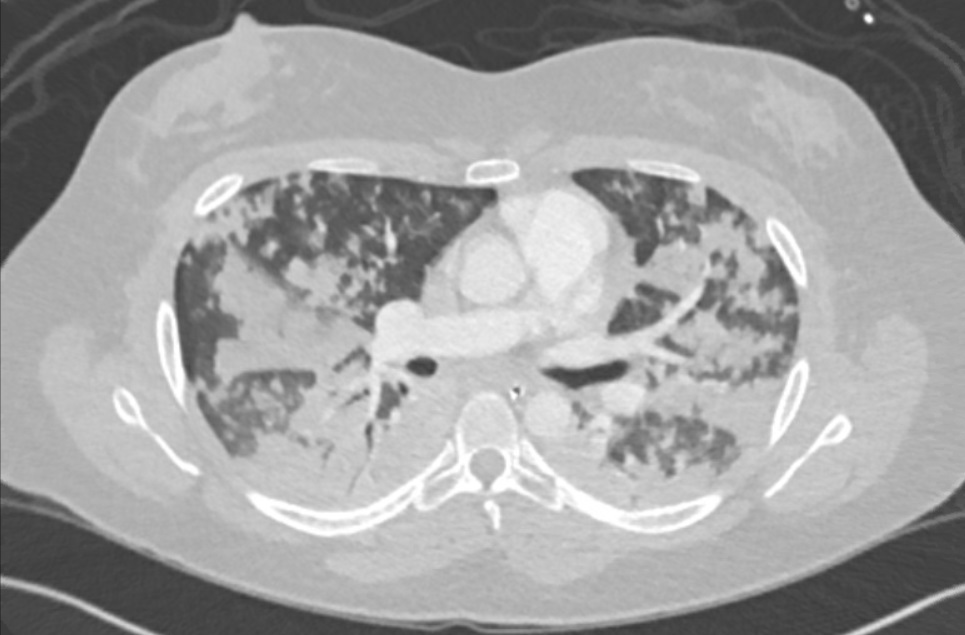Case Presentation: A 21-year-old female with a history of remitting-relapsing MS, and primary adrenal insufficiency presented with fever of three days duration, followed by acute chest pain, and shortness of breath. The patient had been started on her second cycle of alemtuzumab infusion two days prior to presentation. Initial blood work was remarkable for leukocytosis. Computed Tomography (CT) of the chest showed extensive multifocal airspace opacities with no evidence of pulmonary embolism (Image 1). She subsequently developed acute respiratory failure, requiring invasive ventilation which progressed to severe Acute Respiratory Distress Syndrome (ARDS) with a PaO2/FiO2 ratio of 84. She was started on broad spectrum antibiotic and antiviral therapy, along with high dose corticosteroids. The patient underwent diagnostic bronchoscopy, and sequential bronchoalveolar lavage with three aliquots of saline produced progressively bloody return, confirming the diagnosis of DAH. The patient was treated with pulsed steroid therapy. Antimicrobial therapy was discontinued as there was no evidence of infectious process on blood and respiratory cultures. A comprehensive rheumatologic workup was unremarkable. The patient significantly improved with complete resolution of her respiratory symptoms, liberation from mechanical ventilation, and clearance of lung infiltrates on follow up radiographic imaging.
Discussion: Alemtuzumab is a monoclonal antibody that targets CD-52, a protein expressed on B and T lymphocytes, and is a novel therapy in the treatment of MS1. Application of the Naranjo Probability Scale for adverse drug reactions in our case yielded a “probable” likelihood2. The exact pathophysiology is still poorly understood, but could be related to the immunomodulatory effects of this medication. There are only a few case reports that describe this reaction3-5. There is only one published case report that describes the condition in a patient with multiple sclerosis. Our case is unique for the severity of the reaction, as well as complete recovery following discontinuation of alemtuzumab, pulsed steroid therapy, and ventilatory support.
Conclusions: Clinicians must have low suspicion of diffuse alveolar hemorrhage in patients who develop rapidly progressive respiratory failure after initiation of alemtuzumab.

